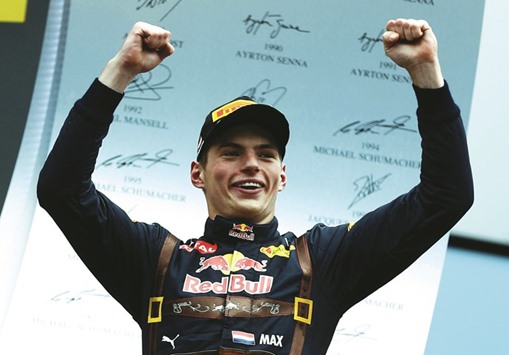There is a pleasing air of youthful enthusiasm to Max Verstappen that the business end of Formula One—the PR training and spin—has yet to eliminate. Attendant to it is an honesty that comes with the impetuousness of his 18 years.
Before the Austrian Grand Prix he not only expressed his eagerness to take on Lewis Hamilton but also questioned the three-time world champion’s bravado—the very front that every driver wears as closely as his fireproofs.
Last year here at the Red Bull Ring, Kimi Raikkonen crashed into Fernando Alonso on the exit of turn two and ended with his Ferrari on top of the Spaniard’s McLaren. Both emerged unhurt but the incident brought cockpit safety in F1 back into sharp focus.
One of the proposed solutions—the halo device—was once again tested in Spielberg, with Ferrari running a successful driver extrication drill before practice. The use of some form of cockpit safety device is not up for debate with the FIA determined to implement a system for 2017 to the displeasure of some drivers.
Hamilton, for example, has been scathing, insisting in Russia, where the alternate device—Red Bull’s aero screen—was tested, that danger was fundamental to F1: “A risk that I am willing to take and that every single driver that’s ever got in the car has been willing to take,” he said.
At the last round in Baku, Azerbaijan, safety concerns over the lack of run-off areas, the pit-lane entry and the bumpiness of the track were similarly dismissed by the world champion.
“These drivers, they moan so much about so many things,” he said. “They want to take all the character and life out of these tracks.” His teammate Nico Rosberg had described the pit entry as “really on the edge”.
Hamilton’s bravery is beyond doubt, his skill behind the wheel matched by a commitment truly to race, to revel in the thrill of wheel-to-wheel combat from which his pleasure is self-evident. But Verstappen has a view denied to the rest of us where, with the cameras and mics in abeyance, the atmosphere is more relaxed: the pre-race drivers’ briefing.
Hamilton’s stance in Baku, it transpires, was not quite the full story. “That’s what he says in the media but when he talks to his team, it’s different,” Verstappen said. “In the media he will say he doesn’t care. I said in the drivers’ meeting that the pit entry was quite tricky—he said you shouldn’t bother about it. But then Nico jumped in and said: ‘Wait, Lewis, you just said you were getting a turtle head when you were entering the pit lane.’”
Toilet-humour aside, Rosberg, it seems, had been party to Hamilton, admitting that he still recognises just how dangerous the day job can be. The increased focus on safety that has followed the deaths of, among others, Jules Bianchi, Dan Wheldon and Justin Wilson will, despite the rhetoric, not have been lost on the British driver.
He enjoys the challenge of the classic tracks, the aesthetics of an open-wheel racing car and the particular type of racing it encourages but perhaps in reality is closer to Verstappen’s viewpoint. “We are all looking for safety and we don’t want to die on the track,” he said. “But I also understand it needs to be a bit of a risk.”
Equally, as young as Verstappen may be, he is old enough to recognise a slight when he hears one and Hamilton using him as an example of how young drivers are not tested by the safer modern tracks in a recent interview may well have prompted his revelation in Austria.
But while Hamilton, in the same interview, insisted he enjoyed facing the danger of F1, the younger man does not fear facing the champion. “I am definitely not afraid,” he said. “Just because he has won world championships does not mean you cannot go against him. Everyone has their own opinion. I prefer to do it on the track rather than in the briefing room.”

Red Bull driver Max Verstappen of Netherlands celebrates his second-place finish at the Formula One Grand Prix of Austria in Spielberg yesterday. (Reuters)
